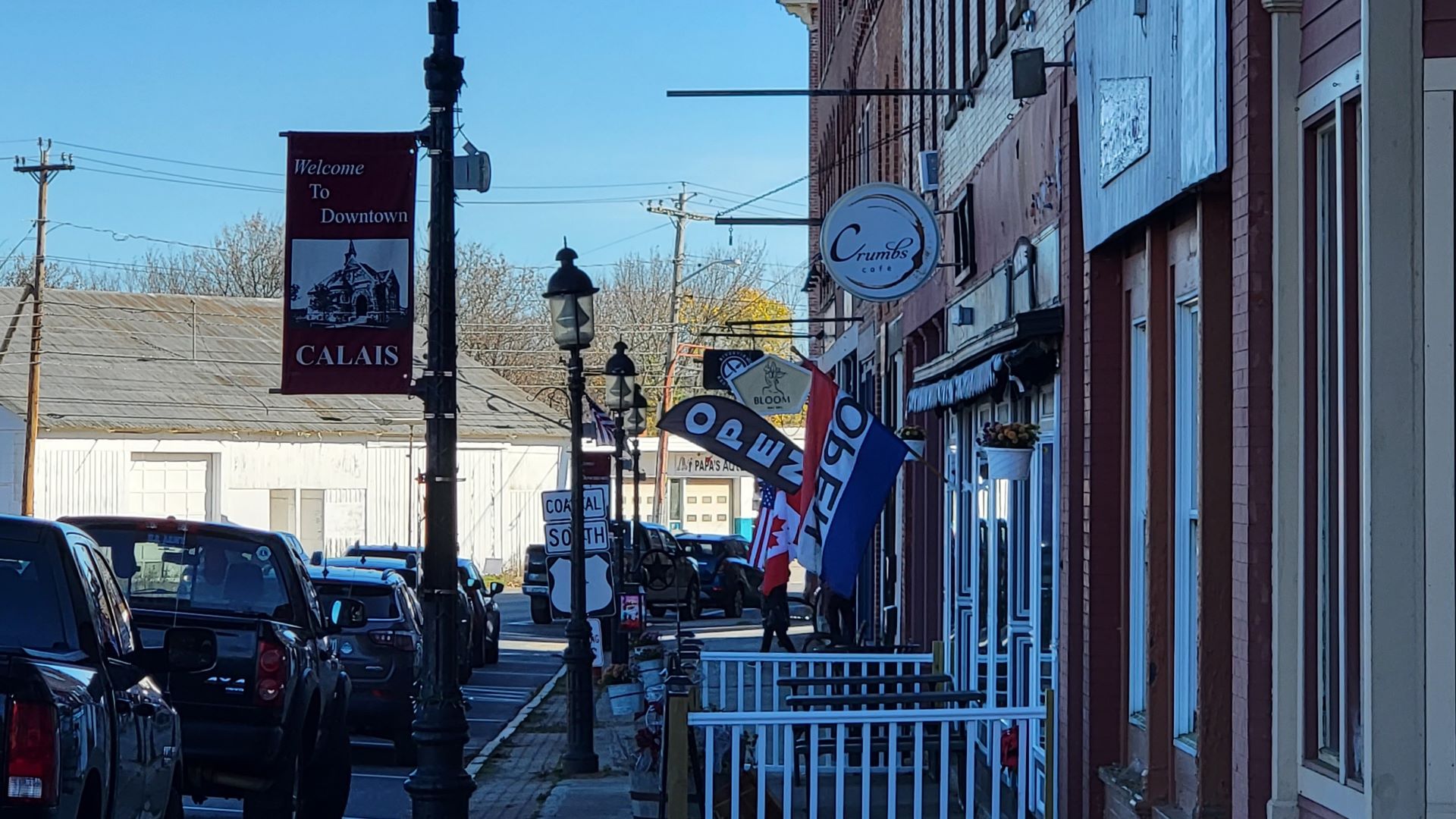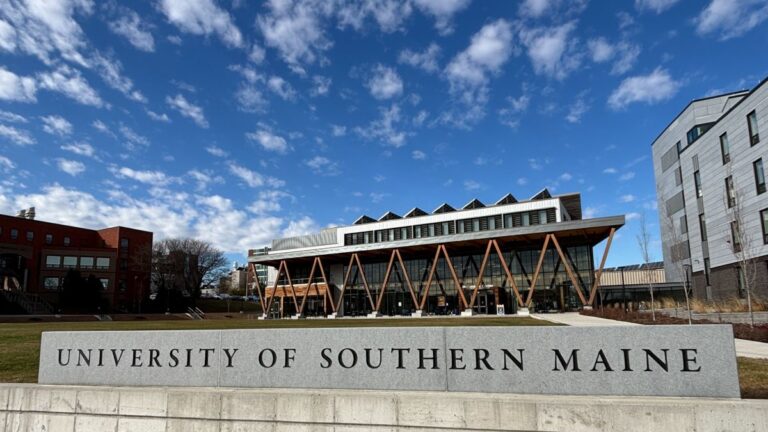Columbia Falls, a cozy riverside hamlet with a population of 476 people, is hardly the first place one would expect a developer to want to base a billion-dollar entertainment park. Nor is Steuben, a small fishing village overlooking the sparkling waters of Joy Bay, the first place that comes to mind for launching rockets. Yet both towns are among the many small communities around Maine that have found themselves wrestling with plans for substantial development, leaving officials scrambling to come up with the resources to properly evaluate the proposals.
A shift to remote work and the perceived safety of rural areas helped make Maine the second most moved-to state in the nation in 2022, after North Carolina, according to an Atlas Van Lines study, with a population increase of roughly 8,000 people. The state also saw soaring numbers of seasonal home purchases, renovations and new construction, particularly in sparsely populated rural areas — places that are often hungry for economic development at whatever cost.
RELATED: Maine’s population grew in 2022 thanks to out-of-state residents
Yet many towns are unprepared to plan for the growth, whether it comes in the form of individual homes or new businesses. As a result, the rural character that drew so many newcomers to Maine is in danger of being lost, as towns with volunteer boards and no professional planning staff attempt to handle a surge in development by evaluating current projects while thoughtfully planning for the future.
“The thing that a lot of communities in Maine lack is professional planning staff really devoted not just to reacting to projects as they come along, but addressing more holistically the planning needs of a community,” said Aga Dixon, an attorney and former senior land use planner who is representing Columbia Falls as it navigates the proposed Flagpole of Freedom Park project.
Dixon, who has worked across the state for years with dozens of municipalities, could think of only three with full-time planning staff. The rest rely on volunteers, who are dedicated and well-intentioned but may lack the particular expertise necessary to evaluate complex projects, or the time and resources to draw up zoning and other regulations that guide development in the way a community wants.
The large projects, like aquafarms and wind turbines, get a lot of attention, said Dixon, but the smaller ones — a subdivision here, a chain store there —can be just as disruptive, often resulting in sprawl or misuses of a town’s assets.
There’s also a regulatory gap that exists if towns don’t have site plan review laws on the books, said Jennifer Curtis, who recently started as the director of planning for Bath and was formerly the town planner for Bowdoinham.
She said projects that involve 15 or more lots or more than 20 acres are subject to state review in the form of the Site Location of Development Act (SLODA), a Maine Department of Environmental Protection review process that looks at the environmental impact of larger developments.
“But there’s a pretty good gap there,” said Curtis. If a town does not have zoning or site plan review regulations (many small communities don’t) governing non-residential development on fewer than 20 acres, “it’s up to whatever they have for performance standards, really, and whether or not they actually have an engaged code enforcement officer” to ensure that development doesn’t negatively impact the town’s character, or erode its soils, or cause storm water to overflow its streets.
“It’s the incremental development that is probably the most nefarious for communities because it’s under the radar,” said Dixon. “Towns are always in reactive mode. And as a consequence, there is no planning. It’s purely responding to the immediate project that is on your desk.” Without long-range planning, an area’s bucolic nature, the very reason residents moved there in the first place, can be at risk.
Planning resources have eroded
So what does a planning office do? It might study the traffic impact of a proposed store, a batch of new homes, or a big new company or factory, or examine the environmental impact of stormwater runoff on nearby lakes and rivers. And it would establish a bigger-picture zoning process, so if a community wants more density and less industrial use downtown, the rules would be in place.
But planning offices at the state level and in small towns have eroded over the past few decades, leaving few resources to guide development just as new people are coming to Maine.
“Over the last 20 years, the financial support for planning capacity at the state, local and municipal level has decreased significantly,” said Nancy Smith, Executive Director of GrowSmart Maine, an Augusta-based advocacy organization. “People are recognizing that not having the land use planning capacity has gotten us into some situations that we don’t want the towns to be in.”
For close to 50 years, beginning in 1968, rural and urban communities alike relied on the State Planning Office for guidance on complex land use issues. But the office — an agency with more than 50 people, including code enforcement staff, planners, a state economist, land protection experts, and statistics and policy analysts — was disbanded by then-Governor Paul LePage in 2012, a decision decried by several state and local officials.
“It was kind of scattered to the four winds,” said Judy East, Bureau of Resource Information and Land Use Planning Director for the Maine Department of Agriculture and Forestry. Some staff moved to different departments, while other functions of the office were lost entirely.
“The Governor’s Office of Policy, Innovation and the Future has kind of stepped into a bit of a breach there, in terms of providing a big picture policy development and guidance,” she said, referring to the office created by Gov. Janet Mills in 2019 to tackle a wide range of issues, including housing, climate resilience, jobs and the opioid crisis. But having a range of expertise devoted to planning under one roof was really valuable, said East, allowing for collaboration across disciplines, such as policy and economics, and more holistic, long-term planning.
“There are certain planning issues that cannot be addressed at the local level, where the state has to kind of drive the train, and that has been missing since the State Planning Office was dismantled,” said Dixon.
Maine has nine regional planning organizations that provide assistance to municipalities. They are fee-based, requiring annual membership dues and additional payments for certain services, and are often called upon to help communities develop comprehensive plans or draft ordinances. They’re “fantastic resources,” said Dixon, but offer more general aid, such as drawing up model ordinances or GIS maps.
Those organizations have also struggled in recent years, particularly in Hancock and Washington counties, both of which have seen proposals for large-scale development, including several fish farms, the Flagpole of Freedom Park, a number of commercial solar projects and even a company that wants to launch rockets off the coast.
RELATED: Meet the people behind Maine’s rocket company
Amid all of that proposed development, the Washington County Council of Governments disbanded and the Hancock County Planning Commission struggled to resume operations after an employee embezzled $100,000. The Sunrise County Economic Council has taken on many of the tasks of the Washington County Council of Governments, said East, but even the larger outfits have only a few staff members to help dozens of towns.
“Sometimes they’re able to help and sometimes they’re not — they just don’t have the capacity.”
Planning costs not always recouped
Not having dedicated planning staff can get expensive: between attorneys, consultants and staff time, the cost to evaluate large projects can run into the hundreds of thousands of dollars. Developers often pay some portion, but there’s no obligation, which can lead small towns to set aside significant chunks of their budgets to assess plans.
In December of 2021, Gouldsboro voters unanimously approved setting aside $100,000 from the town’s unappropriated surplus to replenish its legal reserve account and handle legal issues associated with an application from American Aquafarms for a salmon farm in Prospect Harbor, according to reporting in The Ellsworth American.
And in Columbia Falls, officials have said they need at least $150,000 to cover the “extraordinary” planning and legal costs associated with review of the sprawling $1 billion Flagpole of Freedom Park project, proposed by Morrill Worcester and his family of Worcester Resources. Worcester promised to reimburse the town for costs to hire professionals to review the plans but is now balking at the idea of providing funds to the town, which has already engaged two attorneys.
While towns often recoup at least some of the cost for reviews of large projects, said Judy East, they’re unlikely to get any financial help from smaller developers. “That’s the really hard part … death by 1000 cuts.”
Making use of moratoriums
In the face of large development, some towns are using moratoriums to pump the brakes and allow for further review. Voters in Tremont, on Mount Desert Island, enacted a moratorium on campgrounds in 2021 after a developer proposed what was initially a 154-site campground. The ordinance didn’t halt the project, which had been approved the night before, but did allow town officials to spend six months drawing up ordinances outlining what constitutes a campground and governing such development.
Voters across the state have also used moratoriums as a way to develop regulations governing solar farms, wind turbines and aquafarms, subdivisions and other large-scale projects. Moratoriums can be a good way to give towns time to review what regulations they have and what they might need to adopt, said Dixon.
“Most people think about a moratorium as a way to stop development,” said Dixon. “That’s not how it functions. When a town adopts a moratorium, it’s essentially taking a pause in order to develop the regulations, to properly assess the merits of a project. In my view, when a moratorium is established, that’s when the hard work begins.”
“I do see a lot of merit in the moratorium as a tool so long as it’s used for its intended purpose, which is to allow the town to do the necessary planning to accommodate or assess the impacts of a particular new unforeseen development.”
Lawmakers look for solutions
Rep. Traci Gere said lawmakers and officials are trying to tackle the problem. A bill being drafted, “An Act to Provide Regional Support and Efficiencies for the Delivery of State and Federal Programs,” is “designed to address the resource side,” said Gere, who said she couldn’t provide other specifics as the language was still in development.
Other legislative efforts, such as last year’s commission to increase housing by studying zoning and land-use regulations, or developing frameworks for solar projects, are aimed at guiding development by tackling issues that communities around the state are facing, said Gere, taking some of the pressures off local officials.
Good planning is the type of service, said East, that “if it’s done properly, you don’t notice it because it works. It’s the same thing with engineering — you don’t notice a bridge unless it falls down.”
Sign up here to receive our free, periodic newsletter, Downeast Monitor, that focuses on Washington County news. Kate Cough covers the environment for The Maine Monitor. Reach her with other story ideas by email: gro.r1764111447otino1764111447menia1764111447meht@1764111447etak1764111447.








